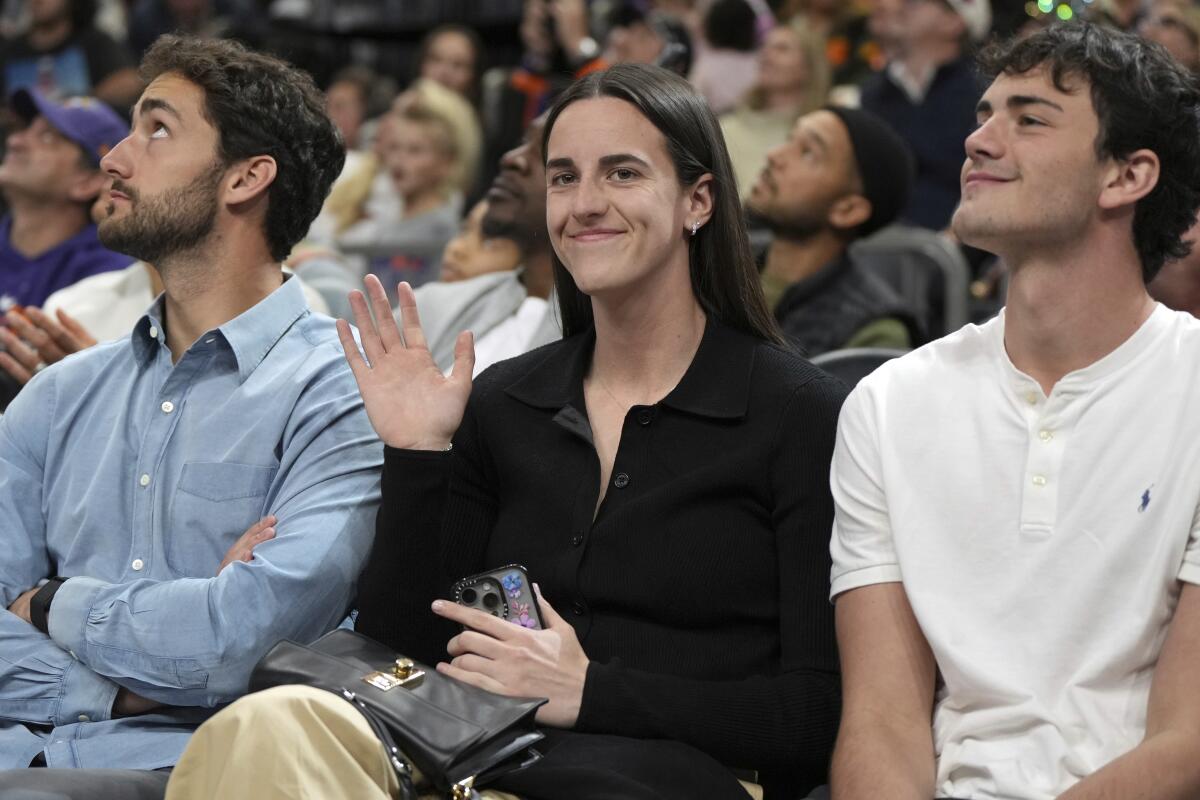The champagne hadn’t even dried after the New York Liberty won the WNBA championship when the players association announced it would opt out of the league’s collective bargaining agreement, which was set to expire in 2027.
A dramatic increase in revenues due primarily to the emergence of Indiana Fever guard Caitlin Clark and other marquee rookies prompted the players to recognize they aren’t getting what they believe to be a fair share. The CBA now ends after the 2025 season, blowing up a pay scale that set average salaries at about $120,000, with rookie minimums at $64,154 and veteran maximums at $241,984.
Clark’s four-year rookie contract under the CBA was for $338,056 — including $76,535 in 2024 — laughably low numbers given the revenue she helped generate. Clark broke almost every WNBA rookie record, but more impressive was her off-the-court impact.
“The numbers are so staggering,” said Ryan Brewer, associate professor of finance at Indiana University Columbus, who was asked by the Indianapolis Star to put a price tag on Clark. “They don’t even seem real.”
The numbers, as crunched by Brewer:
- Clark was responsible for 26.5% of WNBA economic activity for the 2024 season, including attendance, merchandise sales and television. One of every six tickets sold at a WNBA arena can be attributed to Clark.
- Total WNBA TV viewership due to Clark is up 300%, and 45% of total broadcast value came from Fever games.
- WNBA merchandise sales rose 500%, with Clark ranking No. 1 followed by Chicago Sky rookie Angel Reese.
- The Fever’s regular-season attendance averaged a record 17,036 per game, and the team’s total attendance of 340,715 also was a record.
- Clark’s regular-season games were watched by 1.2 million viewers on average, which was 200% more than games in which she didn’t play.
No wonder the players opted out of the current CBA, with the Women’s National Basketball Players Assn. stating its position succinctly with a video to X that proclaimed, “It’s business. We’re out.”
Fever guard Caitlin Clark (22) drives to the basket against Las Vegas Aces guard Jackie Young (0) during a Sept. 11 game in Indianapolis.
(Darron Cummings / Associated Press)
The WNBA signed a new media rights deal in July worth a reported $200 million a year, more than three times the current package. However, a question that will be raised during CBA negotiations is whether the surge in fan interest and revenue will continue or abate over time.
That’s why the WNBA media rights deal pales in comparison to the NBA’s new TV agreement with Disney (ABC and ESPN), Comcast (NBC and Peacock) and Amazon (Prime Video). Those outlets will air the league’s nationally televised games for 11 seasons beginning in 2025-26 and the NBA will be paid about $76 billion.
“As this continues to materialize, the corporate side, the business side, not the players union, but the other sides, are going to continue to watch to see that these numbers can stabilize and maintain rather than just spike and drop again,” Brewer said. “That’s what they’re afraid of. And that’s what’s keeping the numbers low.”
Clark, meanwhile, is doing quite well financially despite her low salary. Sportico on Wednesday published a list of the highest paid female athletes, and Clark was ranked No. 10, just behind Simone Biles. Clark, the only basketball player on the list, earned $11.1 million in 2024. (On top of the list for the second year in a row was tennis star Coco Gauff, who made $30.4 million in prize money and endorsements.)
Endorsements make up the bulk of Clark’s income. She gets $3.5 million a year from an eight-year contract with Nike and also has deals with Gatorade, Gainbridge, Hyvee, Xfinity, Wilson, Buick and State Farm Insurance.

WNBA star Caitlin Clark is introduced to fans Saturday during an NBA game between the Phoenix Suns and the Golden State Warriors in Phoenix.
(Rick Scuteri / Associated Press)
Most WNBA players, of course, have only a small fraction of that sort of endorsement income. They must rely on their salaries, which many supplement by playing overseas during the WNBA offseason.
Only 9.3% of league revenues of $200 million in 2024 went to player salaries, according to Bloomberg. That’s less than $20 million. Meanwhile, NBA players share 50% of their league revenue, which in 2023 meant $5.3 billion of $10.6 billion.
Few argue against a larger slice of WNBA revenues going toward player salaries, and precise numbers will be hammered out in CBA negotiations a year from now. Until then, the best evidence players can point to would be continued growth in attendance, TV viewership and merchandise sales.
And Clark’s contribution undoubtedly will remain a major factor.



